Overview
Hello Ploverites!
The snowy plovers are keeping busy with four new nests were found this week by biologists. One at Kehoe Beach and three between the Abbotts Lagoon mouth and North Beach parking lot. At this time, we have 2 active nests on Kehoe Beach, 2 in the Abbotts Lagoon Restoration Area, and 6 on the beach between the Abbotts Lagoon mouth and North Beach parking lot.
Last week, after a female plover was depredated by a common raven, biologists removed exclosures from existing nests on Limantour. A Point Blue biologist went out early this week to check nests and found the mate of the depredated female plover incubating on the nest. There have been instances of male plovers moving to full time incubation of eggs when an adult female has been lost. Exclosures had been removed from this and another nest due to the current risk to the incubating adults; we'd much rather lose nests than adults. Unfortunately, both nests on Limantour were depredated this week after the exclosures was removed. Two pairs remain here and we will continue to monitor for new nests in the coming weeks.
Plover feuds
Many snowy plovers on Point Reyes beaches are sporting colored bands on both their legs. Each plover has a unique combination of four colors. Plovers hatched on Point Reyes beaches will have some combination of aqua, violet, or red on their left leg. Biologists read these colored band combinations to tell individual plovers apart and gain valuable data on their movement, behavior, survival rate, nesting site fidelity, reproductive success and much more. These colored bands also give insight into each plovers' personalities!
Pictured below is a happy plover pair: male va:go (violet aqua, green orange) and female av:br (aqua violet, blue red), both born on Point Reyes beaches. They had a nest near North Beach parking lot in early April, which failed a couple weeks into the incubation period. During follow up surveys, biologists observed the pair together, assuming they were going to attempt another nest. Then, a female plover with no bands showed up on the beach, immediately pairing up with the male va:go, ousting his old mate, female av:br.
Snowy plovers are polygamous—females have multiple mates throughout the season—so this was not out of the ordinary. And soon enough, va:go and the unbanded female's nest was found north of North Beach parking lot. Interestingly, the female av:br has continually been observed near her old mate, even as he moved up north and started another nest without her. The male va:go has been observed chasing her away on multiple occasions, yet still she remains near his side! She clearly only has eyes for va:go, as she has not been seen with any other male plovers since her first nest early in the nesting season.
If you have any questions, please feel free to contact Matt Lau via email.
Productivity Stats
- 37 total nests this season
- 10 active nest
- 16 hatched
- 11 failed nests
- 9–12 chicks on the beach
- 14 chicks confirmed fledged
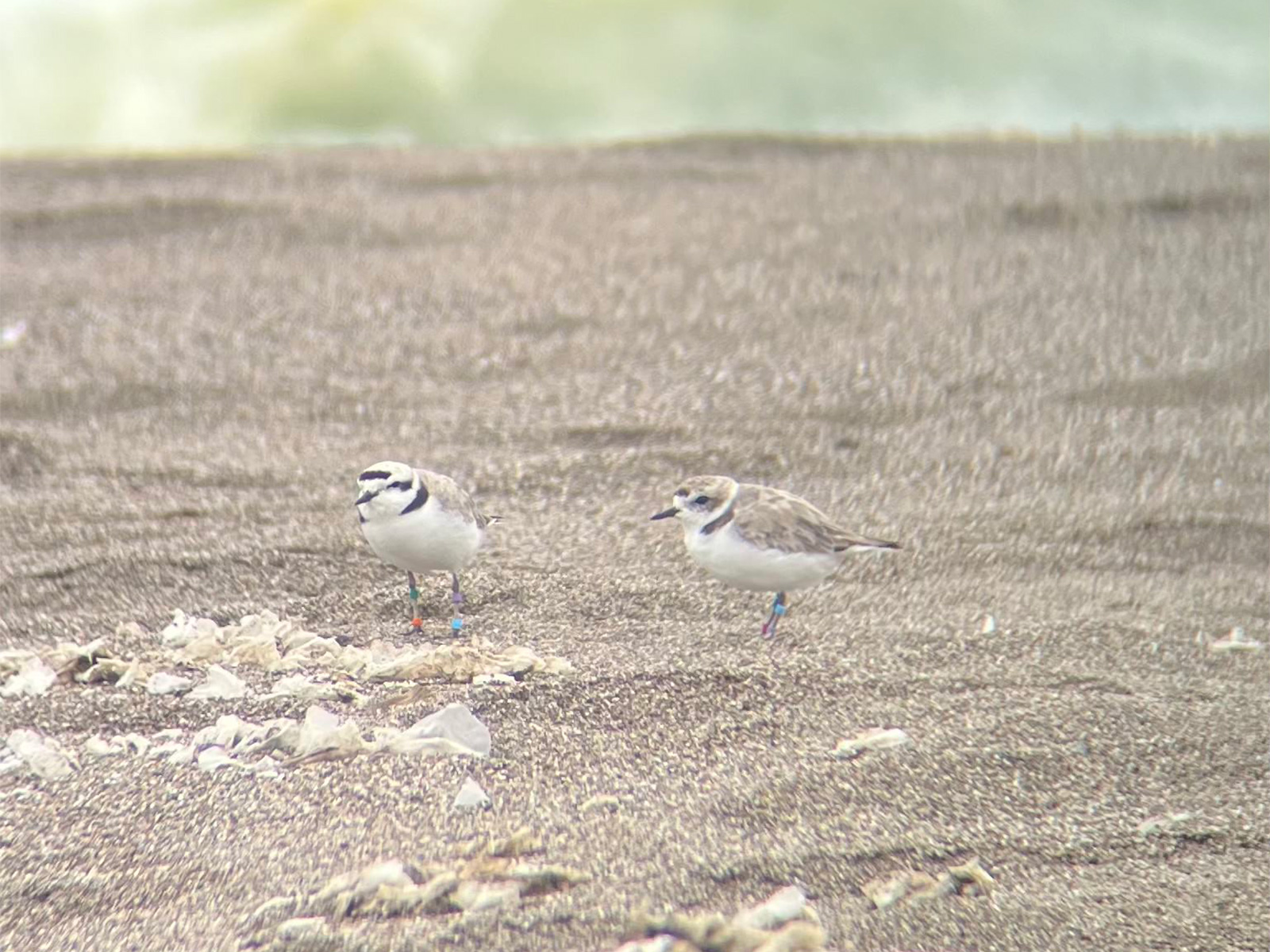 Western snowy plover pair, va:go male (left) and av:br female (right), at North Beach.
Western snowy plover pair, va:go male (left) and av:br female (right), at North Beach.
Photo credit: NPS Photo/Aiko Goldston
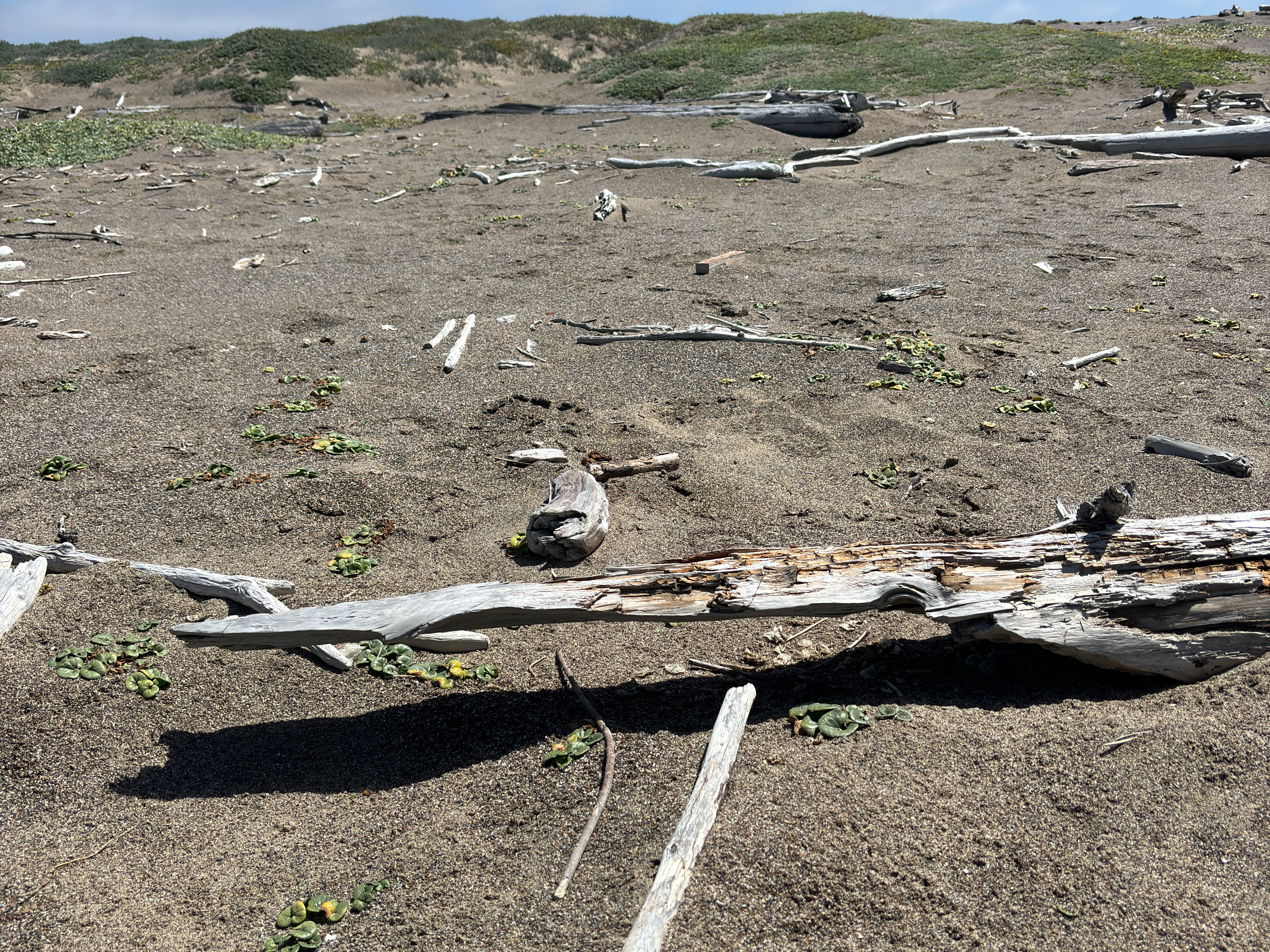 A new, albeit unusual, snowy plover nest adjacent to the Abbotts Lagoon restoration area was found underneath an overhanging log.
A new, albeit unusual, snowy plover nest adjacent to the Abbotts Lagoon restoration area was found underneath an overhanging log.
Photo credit: NPS Photo/Matt Lau
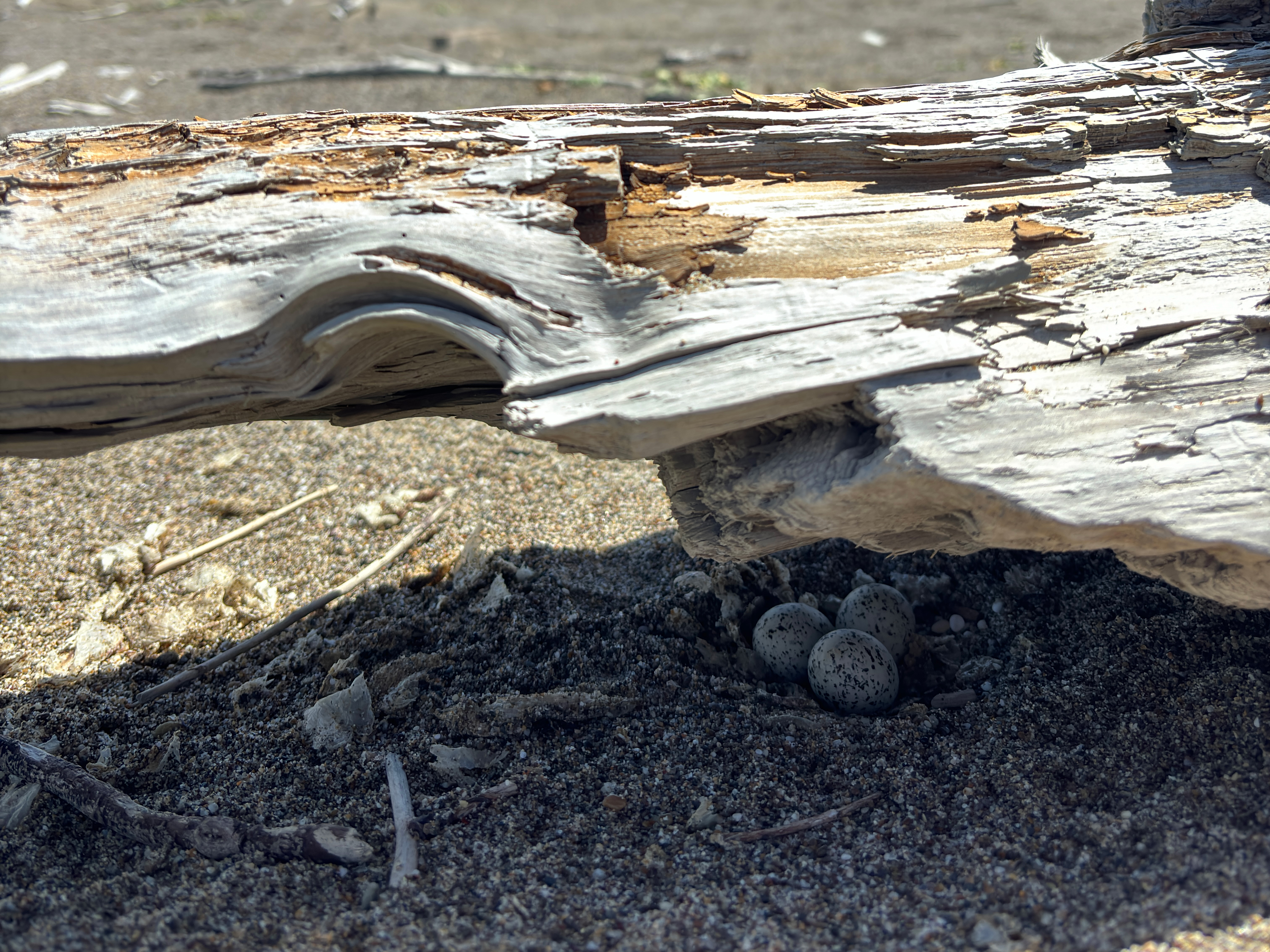 A close-up photo of the new, albeit unusual, snowy plover nest adjacent to the Abbotts Lagoon restoration area was found underneath an overhanging log.
A close-up photo of the new, albeit unusual, snowy plover nest adjacent to the Abbotts Lagoon restoration area was found underneath an overhanging log.
Photo credit: NPS Photo/Matt Lau
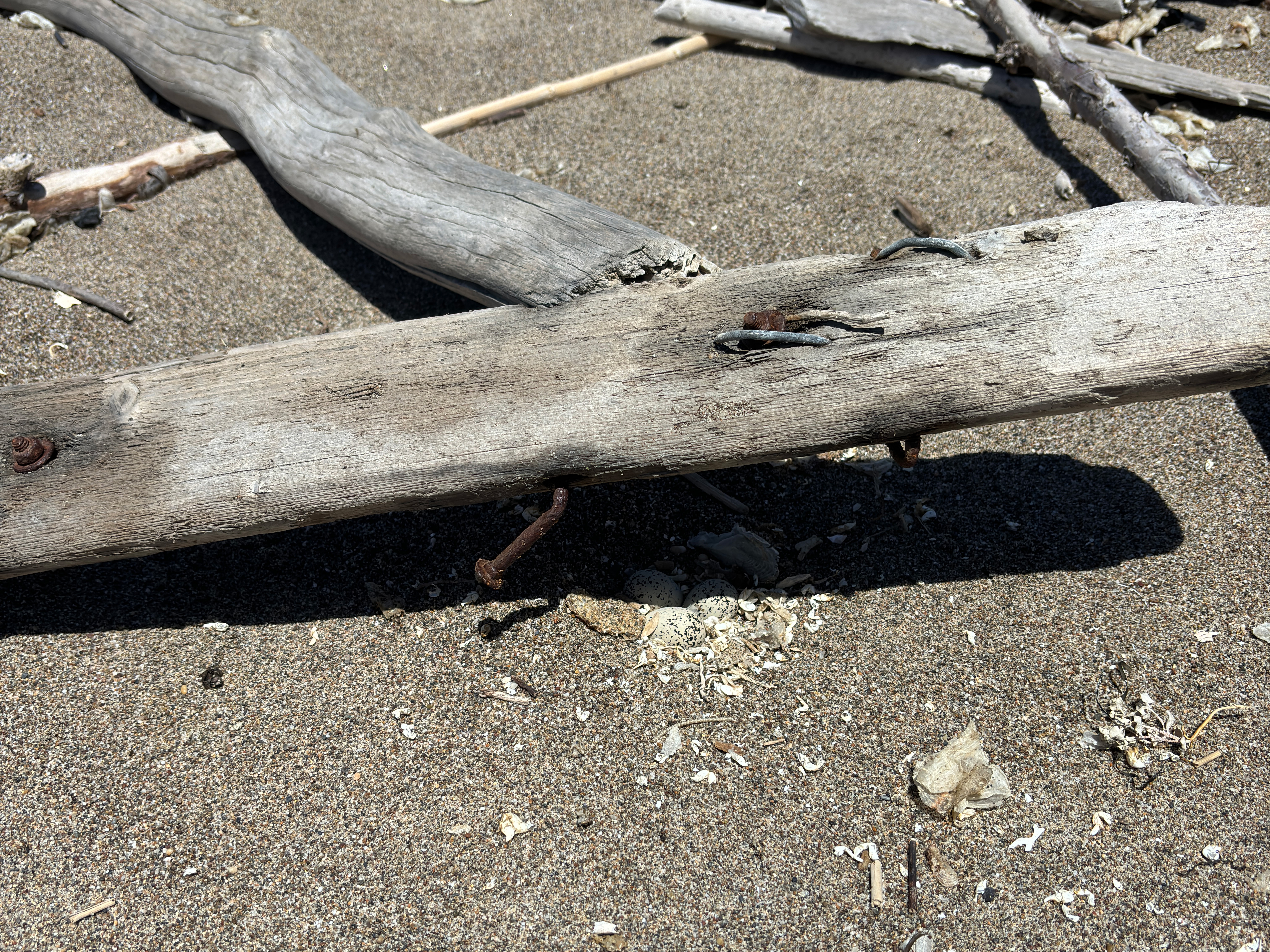 A new nest found near North Beach parking lot, underneath driftwood and a plank studded with nails.
A new nest found near North Beach parking lot, underneath driftwood and a plank studded with nails.
Photo credit: NPS Photo/Matt Lau
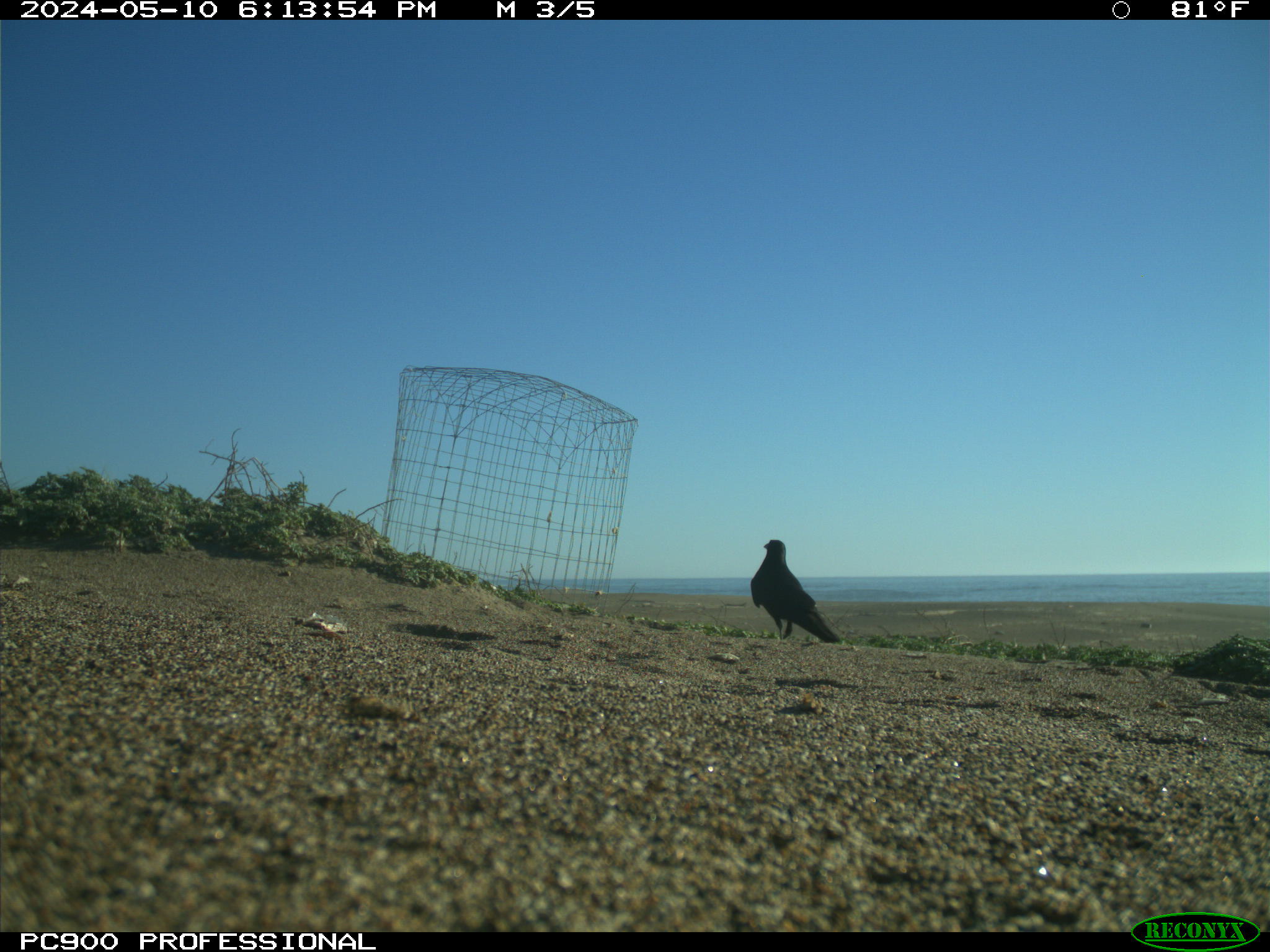 A trap camera photo caught a common raven fly in and check out a nest exclosure. This nest eventually hatched and fledged at least one chick!
A trap camera photo caught a common raven fly in and check out a nest exclosure. This nest eventually hatched and fledged at least one chick!
Photo credit: NPS Photo
The National Park Service shall not be held liable for improper or incorrect use of the data described and/or contained herein. These data and related graphics (if available) are not legal documents and are not intended to be used as such. The information contained in these data is dynamic and may change over time. The National Park Service gives no warranty, expressed or implied, as to the accuracy, reliability, or completeness of these data. For more information: https://www.nps.gov/disclaimer.htm
